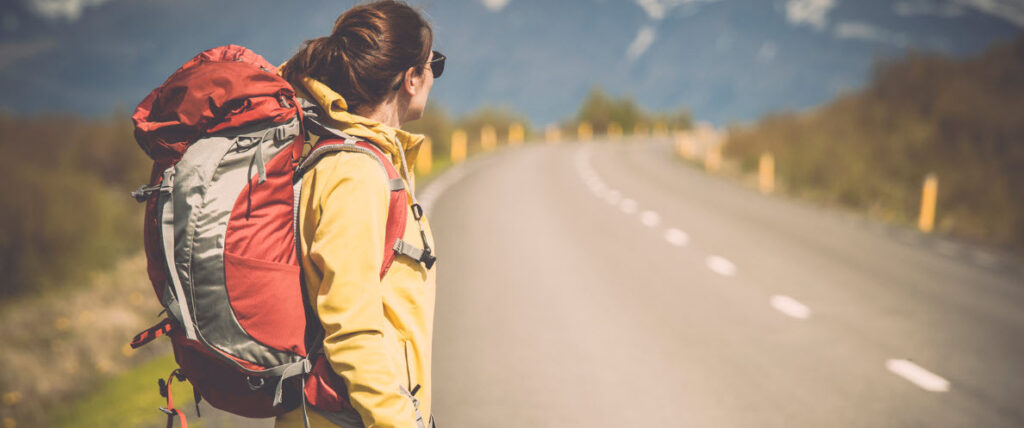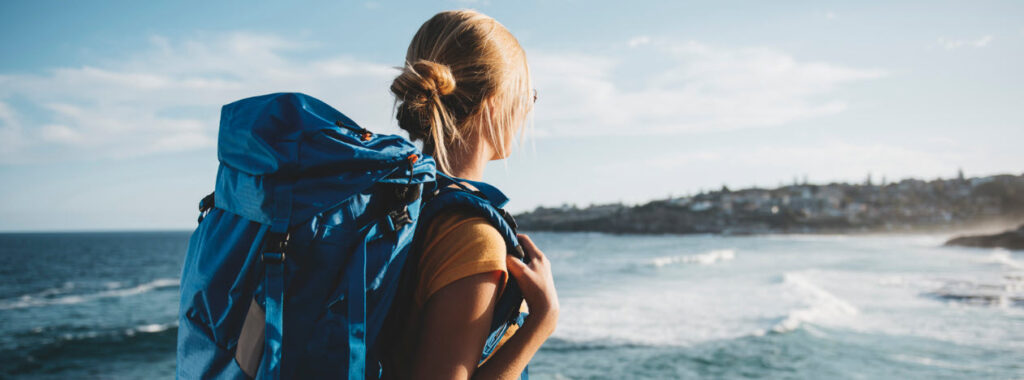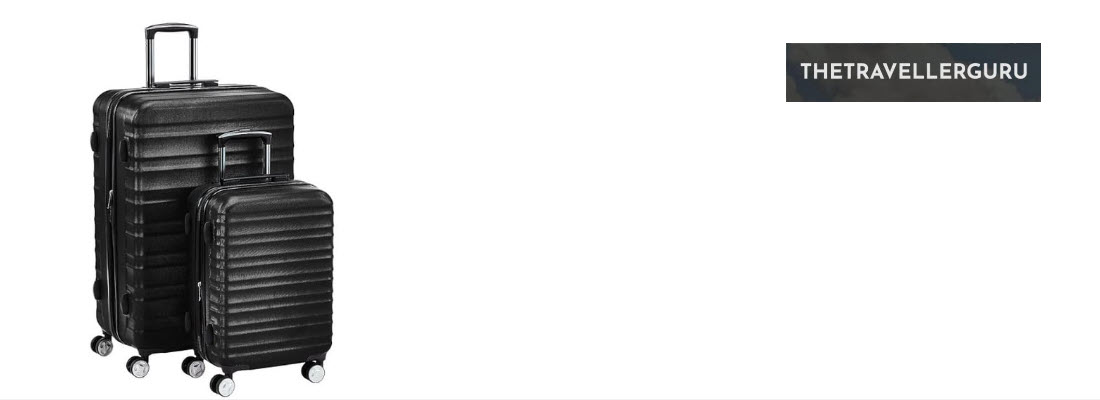Hey there travelers and welcome to my post where we will check my three best frameless backpacks to hit the open road with this year. When it comes to backpacking, a frameless backpack can provide for a lightweight and long-lasting travel option that is comfortable to wear and can fit just about anywhere.
So for those of you in the market for a good frameless backpack to meet your travel needs, I have had a good look around and come up with three decent options below. Let’s check them out.
My Three Recommended Frameless Backpacks
I will review these in more detail below. Still, if you want to get moving without all the carry-on, my recommended products are listed here for your convenience:
What are Frameless Backpacks?
As the name suggests, a frameless backpack is a backpack that doesn’t include the frame at the back. They are usually smaller in size than their framed cousins however hold the advantage of being able to be squeezed into more spaces as well being a little less expensive. Some also consider hem a little more comfortable too.
These backpacks are also lighter because they lack a frame making them a good option for those hiking holidays or camping trips as well.
Check out these: Framed Backpacks

What Should You Be Looking For?
There are several aspects and traits to consider while deciding whether a frameless backpack is worthwhile. Here are the crucial features for you to know.
- Load limit
- Durability
- Weight
- Additions
Load limit
The load limit is the most weight your backpack can carry while staying comfortable. When choosing a backpack, add the weight of your gear (i.e., your base weight) and your food and water (if applicable) to get an idea of the overall weight you will be carrying.
If you are into short trips, backpacks with a low weight limit would be enough for you. On the other hand, should you be backpacking for any length of time, you may want something capable of carrying a little more. These considerations should impact the type of frameless backpack best for you.

Durability
The material used to make a frameless backpack significantly impacts its durability and water resistance. The following are the most frequent materials used in lightweight backpacks.
- Silnylon: This could be the most affordable material with more UV resistance than other materials and has fair durability. However the material has limited waterproofing characteristics and is frequently coated with a Durable Water Resistant (DWR) solution to provide some rain protection. It is a little heavier as well.
- X Pac: This material’s key characteristics are its strength and lightweight. X Pac is a multilayer fabric composed of a nylon face, an “X-Ply” polyester tear-resistant mesh membrane and a waterproof film with a water-resistant finish. X Pac bags are significantly rain-resistant too.
- Dyneema: This material is a lightweight and abrasion-resistant synthetic fiber combination. It is the lightest and most robust (i.e., most durable) material and is virtually 100% waterproof. However, frameless Dyneema backpacks are the most expensive.
- Robic: This fabric is made of high-tenacity ripstop nylon resistant to tears and abrasion. ROBIC nylon 6 is approximately 50% stronger than regular nylon with a DWR treatment applied to provide some water resistance.
Weight
The weight is one of the first things to consider while shopping for an ultralight backpack without a frame – especially if you plan to fly. You should consider switching if you can save more than 2 lbs in weight on a single piece of gear. As a result, I recommend purchasing an ultralight backpack weighing 500 grams or less.
Additions
Other potential additions include:
- Pockets: These items help you keep your small yet essential items close at hand.
- Hip belts: These attachments assist in shifting the weight away from your shoulders and back and onto your hips.
- Shoulder straps: These accessories affect comfort, so always check on them. Consider the shoulder strap alternatives, shape, and accessory possibilities, like pockets or loops.
- Suspension: The suspension straps are also the finest option to alter how the backpack pulls on your shoulders and should be considered.
My three recommendations broken down
So based on the information above and my own experience, I recommend the following options:
1. Bseash 60L Waterproof Lightweight Backpack
My first backpack options has an innovative design to ensure you are set up for ultralight travel with all the addons needed for short hikes and long term travel tours alike. See its specifications below:
- Brand: BSEASH
- Material: Rip-stop polyester material
- Load limit: 60 liters
- Weight: 1.07 kilograms
- Dimensions: 26.77 x 13 x 7.87 inches
Other inclusion:
- Rain cover
- Shoe warehouse
- Top zip pockets
Why have I chosen it?
The product’s breathable mesh shoulder straps with plenty of sponge padding help ease shoulder stress. It also has a broadened and highly elastic breathable back support for maximum ventilation as well.
Thanks to many large-capacity compartments, you’ll also appreciate how roomy this frameless backpack is and it includes eight robust adjustable straps to ensure everything is in place and nothing falls off.
2. Loowoko 50L Hiking Backpack
Next on my list is another durable and spacious frameless backpack perfect for ultralight hiking requirements. It also offers better fabric and stronger straps, two essential elements that make a frameless backpack last many seasons. See its specifications below:
- Brand: Loowoko
- Material: High-abrasion fabric
- Load limit: 50 liters
- Weight: 1.17 kilograms
- Dimensions: 23.62 x 11.81 x 2.8 inches
Other inclusions:
- Multiple-pocket system
- Rain cover
- Multi-direction compression straps
Why have I chosen this?
Because of its high-quality rip fabric that is tear-resistant, anti-scratch and wear-resistant, this product ensures that everything in the bag is protected. When it rains unexpectedly, the extra waterproof rain cover shields your possessions from being soaked and keeps everything dry.
Its generous 50-liter capacity allows you to pack everything you’ll need for decent trip and the shoulder straps, back padding, and hip belt are all firm but comfortable when completely laden.
3. Osprey Renn 50 Backpacking Backpack
The last frameless backpack comes from a reputable brand, guaranteeing excellent value for your money. This bag is designed using premium materials and suitable for all needs. See its specifications below:
- Brand: Osprey
- Material: High-abrasion polyester
- Load limit: 50 liters
- Weight: 1.50 kilograms
- Dimensions: 26.4 X 14.6 X 13.2 inches
Other inclusions:
- Internal hydration pack sleeve
- Compression straps
- Removable rain cover
- Sleeping pad straps
Why have I chosen it?
The first advantage here is the bag’s tensioned back panel making it simply adjustable to accommodate a wide range of torso lengths while offering airflow to help prevent sweating. This frameless backpack’s unique structure transfers burdens to the hipbelt, relieving pressure on the user’s shoulders as well providing a steady, comfortable carry.
Adjustable and removable sleeping pad straps give adequate security for your sleeping pads and the internal hydration reservoir sleeve can hold up to a 3L reservoir as well.
Conclusion
There you have it, my three best frameless backpacks. I would be pleased to know how this article helped you, and as usual, let me know of your experiences with them.
Also, please do not hesitate to comment below if you have any questions, concerns, or corrections or would like me to check anything else out for you.
Until next time.
Have fun
Paul









